Sinking water, which is also called infiltrating and percolating water, enables water to pass through the soil in your home landscape, rather than sending it downstream through pipes and storm drains. This creates less runoff downstream and naturally cleans water to protect our water supply, recharging the aquifer and improving water quality.
This is the third article in a series about the sustainable stormwater design mantra “Slow it, spread it, sink it.” Learn first how to design your landscape to slow down water, then how to spread water in the landscape before you read about how to sink water.
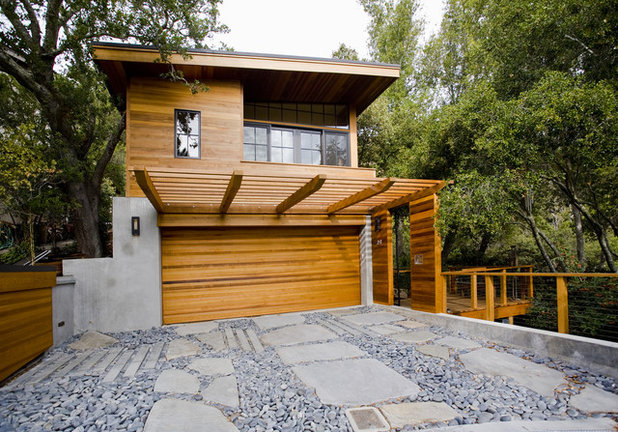
Fulcrum Structural Engineering
How infiltration works. Infiltration is an important natural process that improves water quality by absorbing and percolating water into the soil. Percolation is when water passes through the soil, becoming cleaner as it goes, and organic matter in the soil absorbs water. The “sink it” step is related to slowing and spreading water, because it is often easier to infiltrate water that has been slowed and spread across the ground’s surface.
Using the ground’s inherent ability to absorb water is the easiest and most straightforward way to “sink it,” but it gets complicated when soils have low infiltration rates. The soil might not have the physical or chemical capacity, or both, to hold or percolate a lot of stormwater runoff.
You can still sink water onsite even if you have poor infiltration, but you may need to amend soils in rain gardens and swales to increase your soil’s infiltration capacity. Determine your soil’s infiltration rate using the USDA soil survey site. When you select your property in the soil survey, it will give you details on your soil’s infiltration rate, measured in inches per hour.
Shown: A creative use of pavers and stones to create a permeable driveway
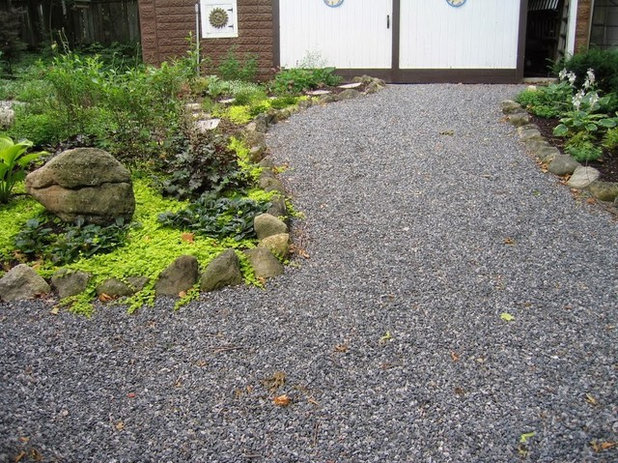
Fern Ridge Landscaping
Use ground cover materials that aid infiltration. If you have the space and your soil infiltration rate is good, then you can sink water directly into the ground as the third step following the “slow it” and “spread it” ideas covered earlier. One of the easiest ways to improve infiltration at the surface of your outdoor spaces is to work permeable materials into hardscape areas for driveways, walkways and patios. Good permeable materials that aid infiltration include:
- Gravel
- Wood chips
- Permeable paving
Additionally, look at the nonhardscape areas in your yard and think about how you can plant them in ways that aid infiltration:
- Meadows and grassy perennials
- Beds of water-loving plants
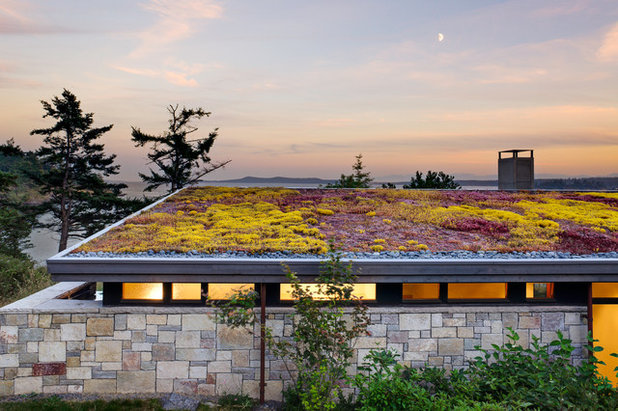
Prentiss Balance Wickline Architects
Design green roofs for infiltration. Green roofs have the ability to slow water and to sink water. The shallow types, such as this green roof planted with sedum, offset roof runoff by soaking up water during small storms. Deeper green roofs infiltrate even more water.
6 Green-Roof Myths, Busted
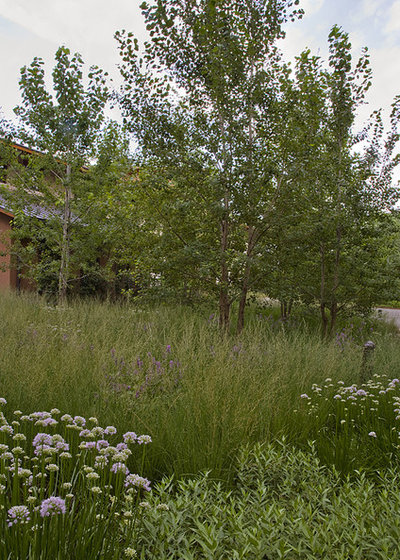
The Garden Consultants, Inc.
Add planting beds for infiltration. A rain garden can effectively absorb and infiltrate lots of runoff, but it can require a lot of space to do so. If you don’t have the space, you can also send water into a series of planted beds for infiltration. Several types of planting combinations are great for absorbing stormwater and, depending on your climate and conditions, they can be used on different types of sites.
- Grassy meadows and prairies with plants with varied root structures, including taproots, bulbs, deep roots and surface-spreading roots, could be planted; this kind of planting could replace your lawn to infiltrate more water in full sun.
- Dense, multistem water-loving trees and shrubs could be planted in shady gardens and in areas where you want privacy.
- Shaded ferns and mosses could be planted in soil with a high organic content.
- Dense, layered plantings with ground covers, woody shrubs, herbaceous plants and trees could be planted; you can create this kind of planting by simply adding more native plants to your existing planting beds or establishing a new layered planting as a great backdrop along the edge of your property.
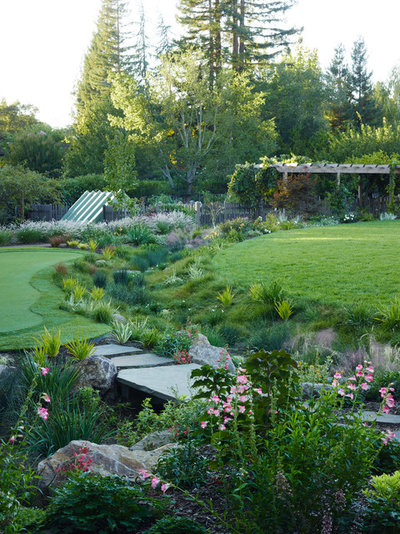
David Thorne Landscape Architect
Include bioswales for infiltration. Swales, which often collect and move water, can also be designed for infiltration. These types of swales, called bioswales, are fully planted for water absorption and have an engineered soil mix that maximizes infiltration. The exact soil specifications vary widely, depending on the native soil and local regulations, but usually include part coarse sand and part compost.
Learn more about swales and other ways to move water through your landscape
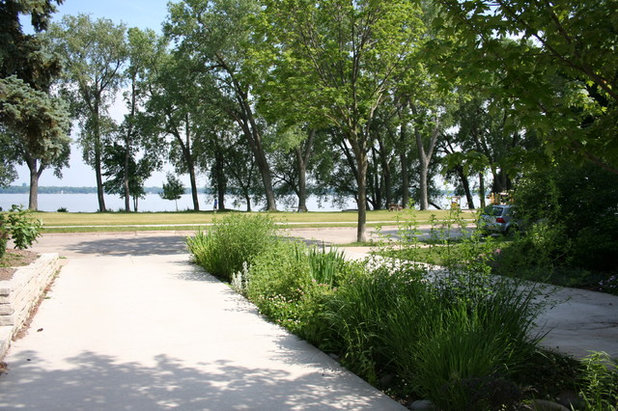
ZDA Inc.
Small-space ideas. Sinking water can be challenging in smaller spaces and in soils with low infiltration rates. Often these challenging sites require more design and planning work to increase the capacity of the soil to absorb water or the use of specific plants in smart ways within water-absorbing planting beds.
No room for a bioswale or a large rain garden? You can still infiltrate water in small areas through planted infiltration beds that act like small rain gardens for tight spaces. The strip of plantings shown here between driveways is a great example of a small planted bed for infiltrating runoff from a concrete surface.
Another small-space idea is using stormwater planters that capture and absorb water from the roof by functioning like a rain garden inside a container. A third option for small spaces is to create infiltration areas below ground with engineered options like dry wells. They temporarily store water and then slowly percolate it in an amended infiltration soil that surrounds the well.





